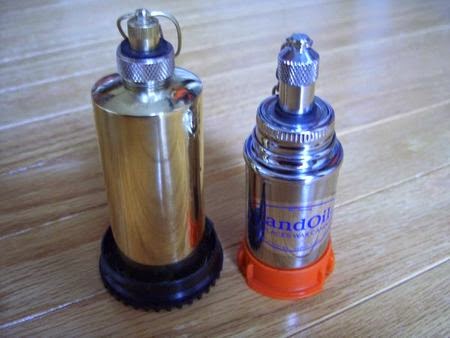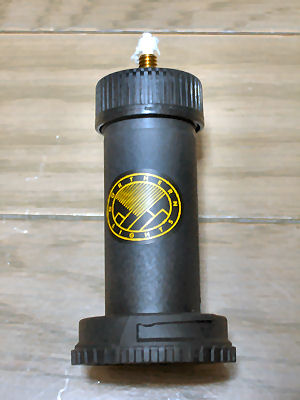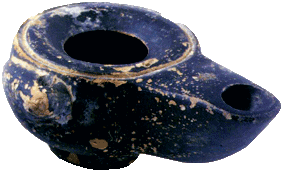Topic
Double Wall Tent Warmth – How Much?
Forum Posting
A Membership is required to post in the forums. Login or become a member to post in the member forums!
Home › Forums › General Forums › Winter Hiking › Double Wall Tent Warmth – How Much?
- This topic has 17 replies, 8 voices, and was last updated 5 years, 8 months ago by
 James Marco.
James Marco.
-
AuthorPosts
-
Feb 28, 2019 at 9:06 pm #3581034
I guess all of us tenters have experienced the sensation of cold entering the tent when we unzip the tent door the first thing in the morning. That means our double wall tents have kept us warmer, but by how much?
My guess is somewhere between 10 F. and 15 F. above outside temperature depending on the tent, its ventilation, volume v.s. # of occupants and the outside temperature.
Anyone ever measure this?
Mar 1, 2019 at 2:50 am #3581092Hey Eric I got 3C difference inside my Duplex (not solid double wall obviously) on a zero C morning, virtually no wind tho’. Used a very accurate fridge thermometer. Out 0C in 3 degrees Celcius. Carry it all the time at 30 grams.
Haven’t had the chance to test my Big Sky Rev DW. Would be at least that even in wind. Love temp nerding especially when it gets cold. The best way to buy bags etc. (btw Eric, my Megalite is going strong!)
Cheers.
Mar 1, 2019 at 1:17 pm #3581129On one of our trips, we got ~12F warmer inside. This was at just above floor level in one of the side pouches where I had put my watch (accurate within .1degree.) One of the few times I actually verified it.
At the time it was 34F outside (watch set on the picnic table for about 10min just before dawn,) two people, Exped Sirius, vents were open, no wind (maybe a slight intermittent breeze,) foggy, but no rain.Mar 1, 2019 at 6:16 pm #3581171I suspect it depends: low wind, higher delta-T; high wind, lower delta-T.
I also suspect the double-wall’s ability to slow air movement across my sleeping body on a breezy night may be more important than the temperature difference.
That said, I recently bought a cheap dual-sensor thermometer I plan to take on my next outing to check the in/out temps.
Mar 2, 2019 at 12:53 am #3581238We have a “Catch 22” conundrum here. (BTW, I should have mentioned, I’m mainly referring to colder spring/fall and winter temperatures.)
On one hand we want decent ventilation to avoid condensation. And ventilation means colder air entering the tent in a winter setting. EX. Waterproof floor “walls” tend to frost up in winter, indicating there has been condensation there.
On the other hand we want the tent to stay warmer on chilly nights so closing up vents seems correct.
But experienced colder weather tenters know we must make a “ventilation/heat retention compromise”. Tents with good upper fly ventilation exit ports and decent lower ventilation entrance ports means some air flow to carry away most of our body moisture needs to happen.
Both my TT Moment DW and SCARP 2 have mesh panels in the upper inner tent walls. This does help keep condensation down but it also keeps inside temperature down a bit as well. Like I said, Catch 22.
Mar 2, 2019 at 3:06 am #3581259Eric, yeah, I agree.
The exped is a double walled 2person/4 season tent. Quite heavy at around 4-5 pounds.
It also has double vents. Outer vents are accessible from the inside by opening the vent mesh and and they have a zip-up panel. Inner vents have a zip=up mesh and a zip-up solid panel on them. (The front door has access to the upper front vent.) The lower edges are about at ground level, leaving a small space for ventilation on one side. In spring/fall we often leave this. In summer we prop it open with a short twig a couple inches. In late fall and on snow we often just kick snow around the lower edge to prevent any spin drift. With the tent sealed entirely, it is fairly dry inside due to the highly breathable inner.When it gets around 20F you might see a bit of frost around the lower edges (a heavy duty coated floor,) but the inside walls are fairly clear, mostly it is on the fly in the morning. The zippers have frost on them. Sometimes in the corners there is small amounts of frost. Anyway, I am guessing that body heat in a totally sealed and enclosed, smaller volume, double walled tent will raise temps as much as 15-20F.
The additional heat accounts for being mostly dry inside at 20F, even though the fly has quite a bit of frost on it. The inner is always above 32F meaning there is mostly water on the inner that the heat is driving out. The fly is a lower temp, so the inbetween air is much dryer than the air inside the inner. (You get a natural progression of moisture laden air out to the shell where it condenses & freezes, removing it from the RH of the inbetween air.) The fly inner surface gets covered with frost. Both the heat (about 15-20F) and the humidity will tend to “push” any condensation out.
At something less than 20F, we get a very light layer of frost all over inner. I would guess this means it never reaches the temperature needed to drive the moisture out. Sometimes we get frost all over the sleeping bags, shoes turn white, etc…
So, I fully agree, Eric. But, there is some temperature ranges where you can be well below condensation points and still be dry. It is a bit of a cache22 at those limits.
Jun 13, 2019 at 5:54 am #3597599Anonymous
InactiveIn the nearish future, I shall be making a roughly 10.5’x10.5′ square tarp, out of a combo of RBTR’s 7D Silnylon (outer), aluminiumized mylar (core), and polycryo (inner). It will be reinforced with a combination of 300lb black Kevlar cord at each of the guy outs, and about 3 to 4″ wide (but folded in half) 1.6 oz/yd2 Silpoly around the outer perimeter.
The plan is to do a mock Pyramid set up with it during winter/cold trips, and bring a couple of medium sized beeswax candles.
I suspect that it will easily up internal temps around 35*F or so (w/ candles going), and the candles will help to keep it dryer inside. We’re talking 3 layers of WP materials and IR reflecting going on simultaneously, plus body heat and heat from 2 medium sized candles, and pretty well closed up.
I use to have a largish Seek Outside Tipi tent, which I combined with a Ti woodstove also from them, but this will definitely be lighter and Hella A LOT more convenient. Gather and saw/break wood, pffft. Just light a couple candles and get a nice light show and a lot of extra warmth, at a reasonable weight.
I’m not completely sure, but I think that aluminumized mylar and regular polycryo weigh about .5 oz/yd2 or so each. Which combined with the 7D silnylon will equal to around 1.8 oz/yd2. Then the reinforcements might add a total of about 3 to 5 oz or so to the whole weight.
I suspect it will come in around 2lb, or slightly over, for the tarp.
Jun 13, 2019 at 10:09 am #3597613I have a flat round tin full of candle and about 3 – 4 wicks. It is an ’emergency’ candle, and is meant to provide quite a few degrees of warmth inside a tent. It is probably 30+ years old. So, yes, this idea has been kicking around for a while.
HOWEVER, do not seal the tent right up in the name of keeping the hot air inside. You will be keeping not just the ‘hot air’, but also the CO2 and eventually the CO inside. This has unfortunate consequences.
Cheers
PS: for those who are new to BPL, the ‘unfortunate consequences’ can include death.Jun 13, 2019 at 12:01 pm #3597624I always found putting a simple candle lantern near the vent was sufficient to drive moisture out and provide sufficient “breathing air.” Combustion of any compounds (wax for example) produces a lot of CO2/CO. Like Eric said, a “Catch 22.” You need ventilation. Again, relying on body warmth, with light ventilation will raise the inner temp 15-20F.
A heat exchanger/plenum system is usually incorporated in a house, for example, to eliminate exhaust gasses and supply recirculated warm air for the house. (Space heaters actually contribute to CO poisoning.) You HAVE to remove exhaust gasses before you breath them. Not really possible in a sealed tent. Sooo, some ventilation is needed to remove the volume of exhaust gas you produce. This means drawing in cold air from outside. Cold air at -20 might overwhelm a candles ability for heating your tent. Near to break even, heating and the amount of exhaust gas and the amount of cold air infiltration. About 20F difference is about the best you can do and still have fresh air for breathing. A stove design that drew in cold air from outside, and exhausted any combustion products to the out side will let you warm your tent much more, safely. The Rvalue of fabrics is pretty much nothing. IR reflection is good for 10%. A stove set-up works as long as you stay up, off the floor 3-6″. The heat is often trapped near the peaks or upper area. It doesn’t help a lot with floor sleeping. Even in Alaska, they don’t sleep on the floor, rather a raised platform.
I think there was an atricle on BPL about that: https://backpackinglight.com/micro-wood-stove-clark/. Your idea could work if you supply outside air for the candle, and a pipe to allow exhaust air out, with some sort of heat exchanger for warm air inside. I wouldn’t risk it in a sealed tent. But the weight gets pretty bad.
Jun 13, 2019 at 1:06 pm #3597628I keep a CO monitor/alarm in my SUV which also functions as a camper. Sometimes I will take a nap in there with the engine running for AC or heat. I have used a candle lantern in my tent for winter camping, and it really does heat the space. I was reluctant to leave it lit when asleep. Perhaps a CO monitor would make it safe enough?
Jun 13, 2019 at 5:12 pm #3597666Anonymous
InactiveThere will be some venting going on. “Pretty well closed up” does not mean, entirely closed up.
2 air spaces between 3 completely waterproof fabrics + an IR reflector will lead to significantly more insulation than a tent with 1 layer of WP fabric and with one other layer of breathable fabric, as I assume that this thread is about.
Context and relativity, on both counts.
For venting, I’ve thought of installing a panel of WPB fabrics made out of polypropylene and siliconized polyester, with some apex in between. Plus, whatever venting happens from a tent that has various leaks around it as on the bottom, the folded over door gap, etc.
I severely doubt that such a set up, with two medium beeswax candles is going to lead to death, even if ran all night. But I will probably use a CO monitor the first times at home in the backyard, before trying it in the field.
Jul 6, 2019 at 4:14 am #3600796AHA! flame lanterns! Of course that’s “cheating” but it’s worth it IF you ventilate.
Yes, I’ve used both candle lanterns and CANDOIL small, collapsable oil lamp lanterns and both do a great job of warming wither a 2 man tent or a 2 man snow Quinzhee. Amazing how little dry heat it takes to keep a double walled tent warm.
BTW, Sadly Candoil is out of business. Thankfully I have two of their products and will buy more if “somebody” wants to sell me one they don’t want anymore.
Jul 6, 2019 at 6:25 am #3600804Candoil – PICTURE please!
A search for a ‘Candoil lantern’ yields an unbelievable amount of totally irrelevant crap, including the Canadoil company. An occasional candle lantern, but nothing resembling a Candoil lantern afaik.
Cheers
Jul 6, 2019 at 6:59 am #3600807I think this is the type

there was also a Cabdoil insert for the UCO lantern
 Jul 6, 2019 at 7:38 am #3600810
Jul 6, 2019 at 7:38 am #3600810@Franco
Ah so – thanks. Basically, that is ‘just’ a simple oil lamp, such as has been in use for up to 70,000 years. Very trad.
This one is from ~15,000 BC in Egypt I think. No obvious wick holder at that stage.

This one is from ~600 BC in Greece. It does have a wick hole and a filling hole.
Seems to me that it should be possible to make these ourselves? Brass bush and a cotton (NOT synthetic!) wick. Body not so critical.
Cheers
Jul 6, 2019 at 10:02 am #3600811Yeah, the biggest problem I had was they leaked. ‘Corse, I was using pure kerosene, not their scented oil. My pack stunk of kero the whole trip. Maybe a brass tube with an O-ring sealer will work better.
Jul 6, 2019 at 10:36 am #3600812My pack stunk of kero the whole trip.
Been there … ugh.O-ring is good but the outside will still smell of kero.
Better to carry on outside of pack.Even better: olive oil instead of kero, which stinks all the time.
Cheers
Jul 6, 2019 at 1:45 pm #3600830Sounds good, Thanks, Roger!
-
AuthorPosts
- You must be logged in to reply to this topic.
Forum Posting
A Membership is required to post in the forums. Login or become a member to post in the member forums!
Trail Days Online! 2025 is this week:
Thursday, February 27 through Saturday, March 1 - Registration is Free.
Our Community Posts are Moderated
Backpacking Light community posts are moderated and here to foster helpful and positive discussions about lightweight backpacking. Please be mindful of our values and boundaries and review our Community Guidelines prior to posting.
Get the Newsletter
Gear Research & Discovery Tools
- Browse our curated Gear Shop
- See the latest Gear Deals and Sales
- Our Recommendations
- Search for Gear on Sale with the Gear Finder
- Used Gear Swap
- Member Gear Reviews and BPL Gear Review Articles
- Browse by Gear Type or Brand.







